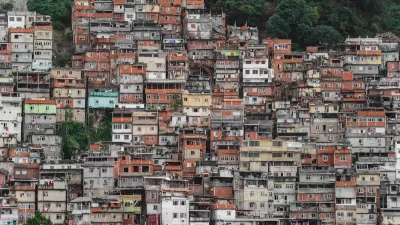Marcus Tudehope offers 12 reasons why community-led counting and mapping of the urban poor can be an effective tool for putting "power and democracy" into their hands.
"Enumeration: to be counted; it is the fundamental basis of inclusion in the city," argues Tudehope. "To exclude a community from census and mapping activities is to effectively render it invisible to urban decision-making processes. But as the world urbanises, an ever-increasing proportion of humanity is coming to reside in urban poor settlements, outside the scope of most traditional methods of enumeration such as government censuses which underpin land management and urban planning."
"In settings where the capacity or will to include the urban poor in official mapping and enumeration activities is lacking, participatory, community-led processes frequently come to occupy the void," he explains. "Following the seminal work of SPARC India's We the invisible, its 1985 census of pavement dwellers in Mumbai, the concept has gained international recognition and is now widely practiced throughout the developing world. However, community maps and data are not ends in themselves, but they can form vital steps in the larger process of creating more inclusive cities."
Tudehope goes on to explore 12 reasons - from increasing tenure security to countering misinformation campaigns - why community-based census and mapping activities can "assist the urban poor in staking their claim to a place in the city."
FULL STORY: Mapping the urban poor: 12 reasons why you should conduct enumerations of your settlements

Alabama: Trump Terminates Settlements for Black Communities Harmed By Raw Sewage
Trump deemed the landmark civil rights agreement “illegal DEI and environmental justice policy.”

Planetizen Federal Action Tracker
A weekly monitor of how Trump’s orders and actions are impacting planners and planning in America.

Why Should We Subsidize Public Transportation?
Many public transit agencies face financial stress due to rising costs, declining fare revenue, and declining subsidies. Transit advocates must provide a strong business case for increasing public transit funding.

Understanding Road Diets
An explainer from Momentum highlights the advantages of reducing vehicle lanes in favor of more bike, transit, and pedestrian infrastructure.

New California Law Regulates Warehouse Pollution
A new law tightens building and emissions regulations for large distribution warehouses to mitigate air pollution and traffic in surrounding communities.

Phoenix Announces Opening Date for Light Rail Extension
The South Central extension will connect South Phoenix to downtown and other major hubs starting on June 7.
Urban Design for Planners 1: Software Tools
This six-course series explores essential urban design concepts using open source software and equips planners with the tools they need to participate fully in the urban design process.
Planning for Universal Design
Learn the tools for implementing Universal Design in planning regulations.
Caltrans
Smith Gee Studio
Institute for Housing and Urban Development Studies (IHS)
City of Grandview
Harvard GSD Executive Education
Toledo-Lucas County Plan Commissions
Salt Lake City
NYU Wagner Graduate School of Public Service




























